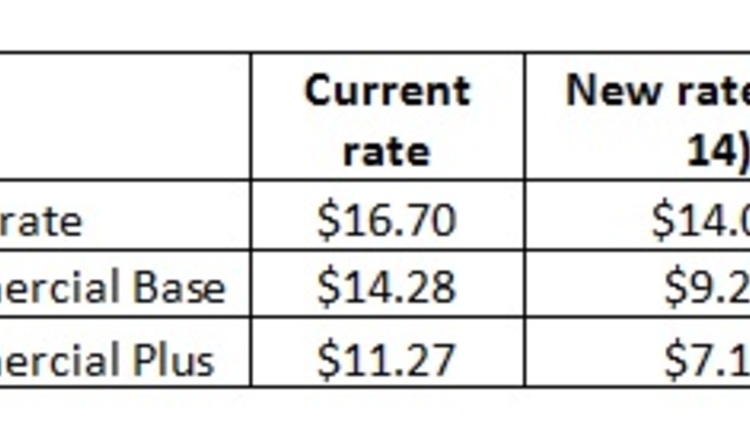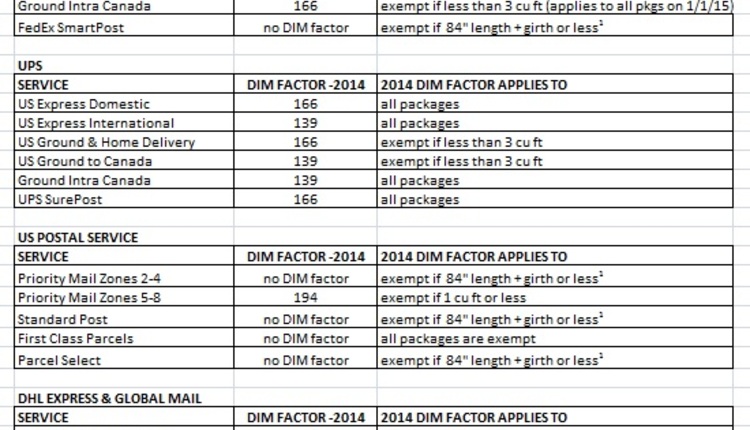Earlier this year, the U.S. Postal Service unveiled plans for 2007 and beyond, and to say the changes are sweeping would be an understatement. If you ship packages through the Postal Service (and these days, who doesnt?) you will be impacted but there are some steps you can start to take right now to minimize those impacts, ensure a smooth transition when those new rates and requirements take effect and take full advantage of some excellent opportunities that will become available. Shippers who wait until the last minute to analyze their mailing and shipping operations to determine the impacts and implications of these changes may be left literally out of shape.
Earlier this year, the Postal Service imposed a 5.4% across the board rate increase, designed in part to correct some pension-related issues. Compared to the coming 2007 rate changes, the 2006 increase couldnt have been simpler: if you were a customer of the Postal Service, your rates went up 5.4%, regardless of class or weight, with no changes in the rules. It may not have been easy to swallow, but it was a piece of cake to understand. Fast forward to 2007 and seemingly everything is changing from rates (some categories up 40% or more, while some are actually down over 20%), to sweeping content changes (new categories being created, old ones being modified), to distribution network changes that may dramatically alter where and how you prepare and deposit your packages. Its also important to keep in mind that the jury is still out; these are proposed changes, and the final product may differ somewhat from these proposals, depending on the input of the stakeholders. Finally, we have yet to see the underlying rule changes. As they say, the devil may be in the details!
Lets take a look at some of the highlights of the 2007 changes, along with some ideas and resources to make sure you are ready when the time comes.
Moving From Content-Based to Shape-Based
This is a biggie. The Postal Service has been around practically since the dawn of time, and over the years, it has established a number of complex mailing categories, often having to do more with whats inside the item than its shape or weight. A well-known example is periodicals (newspapers and magazines). More obscure examples include congressional mailings (surprise, they get a special deal); and some that are just plain arcane (did you know you can mail live chickens?). Well, when it comes to packages, much of that is about to change. Commercial carriers have long recognized that their cost models are based on size, weight and sort method, not what might be inside the package. The Postal Service is in the process of deploying their next generation package sorters, and those packages that can be sorted in this new, highly automated environment will be the least costly to ship. Currently, a two ounce First-Class letter, a two ounce flat and a two ounce parcel all get charged the same to mail ($0.62), although the letter clearly costs the Postal Service much less to process and deliver. It may be possible to reconfigure your lightweight package to run on the more highly automated flat sorting equipment, and if so, the increases may be minimal. For example, a First-Class parcel is currently $1.59, but it would be $2.00 under the proposed rates. But if you can reconfigure it as a flat (and the definition of a flat is surprisingly broad), the proposed cost is a much more modest $1.62.
The END is Near!
As part of their transformation plan, the Postal Service is making a comprehensive, top to bottom redesign of their distribution network, a project known as END (Evolutionary Network Design). When completed sometime in 2009, the entire
Getting Closer to Your Customers: Its a Good Thing
For the Postal Service, the incremental cost to deliver a package is extremely low, so you may want to consider options at the DDU level (Destination Delivery Unit, which is your local Post Office in laypersons parlance). The 2007 proposed rate increases for DDU packages are much more modest than other categories. If youre shipping in a category that has a presort discount but no destination discount, such as a book entered as Media Mail, you may be able to switch to Presorted Bound Printed Matter, which offers both a presort and a destination discount. If you dont have the volume to drop at the DDU level on your own, you may want to partner with someone who does. As a bonus, a commingled mailing may help you get deeper, volume-based discounts.
Its More Than Just Weight
Dimensional Weight, or DIM, has long been applied to air packages by the commercial packages. But for the first time, the Postal Service will apply Dimensional Weight to some Priority Mail packages, and it all has to do with the Postal Services costs for transporting these packages, much of which is handled by FedEx. FedEx and the Postal Service recently announced a multi-year extension of their mail transportation agreement (and a new, somewhat smaller but similar transportation agreement was signed with UPS). Although the exact details of these agreements have not been made public, we do know that FedEx is compensated on the overall cube of the shipments, not on the weight. So the Postal Service pays FedEx exactly the same amount for a Priority Mail package that is 12 x 12 x 12, regardless of whether it weighs two pounds or 50 pounds. So be prepared for a 194 dimensional weight on Priority Mail packages. But there is a loophole: only higher zones will pay the new dimensional weight. Remember, those shippers who can get closer to their customers will be the least impacted.
So how should you deal with these changes?
- The Postal Service is moving away from content-based rates and regulations, to shape-based rates and regulations.
- Tip: Reconfiguring of your packaging may save you money. But changes in packaging can be both costly and complex, so start evaluating and planning now.
- The Postal Service is moving toward a sweeping overhaul of their sortation and distribution networks, a process internally called Evolutionary Network Design (END). Package shippers are encouraged (and will be rewarded) for dropping their packages farther into the system. Those who dont may take the brunt of the increases.
- Tip: Take advantage of Postal Qualified logistics providers who can expedite your products downstream to save you money while providing value-added services
- The Postal Service intends to stay away from the numerous add-on charges that commercial carriers impose, although a new dimensional charge is in the works, as well as increases in the balloon charge for Parcel Post packages, from the current 15 pounds to a proposed 20 pound charge.
- Tip: Make sure your packaging fits the items youre shipping, so youre not shipping a little item in a big box. Also, newly developed Rate Shopping Software enables shippers to take advantage of the lowest rates (including surcharges) on a package-by-package basis. This allows for apples-to-apples shipping cost comparisons between the Postal Service and commercial carriers. Make sure you review your shipping invoices at least on a quarterly basis a thorough analysis will save you money.
- Postal Reform legislation currently before Congress will affect your future if enacted and not necessarily for the better. Proposed changes include smaller, annual rate increases, much like the other carriers and new regulatory procedures.
- Tip: Stay ahead of the issues and get involved with shaping the future of Postal Service rates and regulations by maintaining active involvement in your local PCC, Trade Association or Mailers Group.
Doug Caldwellis Executive Vice President of Parcelpool.com. Prior to his involvement with Parcelpool.com, he was Vice President at AFMS and worked closely with AFMS clients and team members in developing and analyzing small parcel and LTL pricing/costing strategies. He can be contacted at Doug.caldwell@parcelPool.com.








